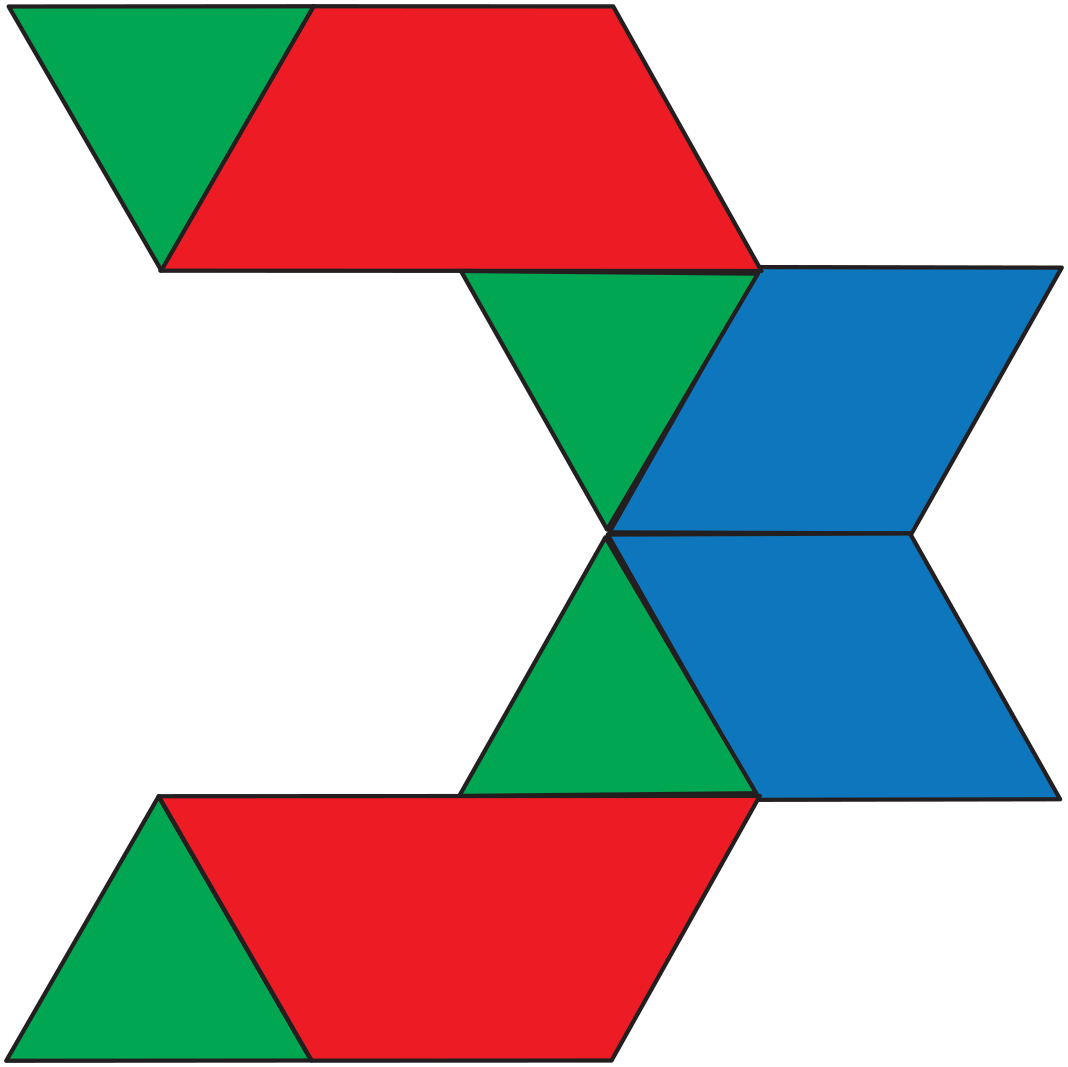Pattern Block Symmetry
Est. Class Sessions: 2Summarizing the Lesson
After students finish the pages, have them discuss their experiences
Return to the question asked at the beginning of the lesson:
Direct students' attention to the notes they generated on chart paper at the beginning of the lesson. Add to the notes as appropriate.
- A figure with line symmetry has two halves.
- The two halves match exactly.
- One half is flipped over the line of symmetry.
- A line of symmetry will divide the two halves.
Place pattern blocks on the display as shown in Figure 4.
Suggest to students that they themselves are symmetrical. Ask them to imagine a line going straight down the middle of their faces. Have them name the features that are the same on each side of the line. (e.g., one eye, one ear, half a nose and mouth, etc.) Point out that this imaginary line is also a line of symmetry, even though it is not visible.
Draw one half of a heart on the display. Ask:
Draw the second half of the heart and show the line of symmetry.














